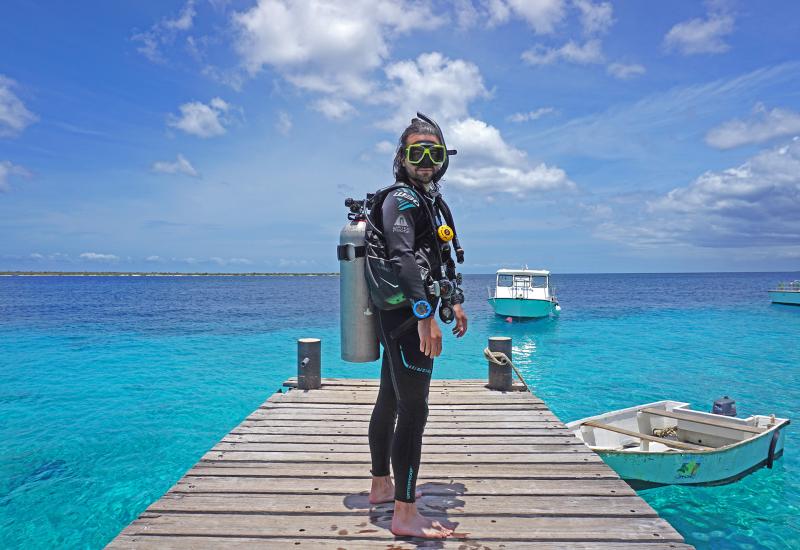Demystifying the DSLR Why Upgrading to a Digital Single-Lens Reflex Camera Will Make You a Better Photographer

INEVITABLY, THERE comes a time for most underwater photographers when the focus shifts from the excitement of taking pictures underwater to the finer points of technique and the equipment necessary to create great images. For most, this means an upgrade. While point-and-shoot cameras are fully capable of creating great images, there are several advantages to shooting with a digital single lens reflex, which is what serious amateurs and professionals use.
What defines a DSLR? First is the camera's ability to use a wide range of high-quality interchangeable lenses for specific shooting scenarios and for subjects ranging from super macro to extreme wide angle. Additionally, the viewfinder allows for more-accurate composition through the actual lens using a mirror to reflect incoming light through the lens to the eye. When the shutter is depressed, the mirror flips up for a split second and the light hits the camera's sensor, capturing the image.
WHY CHOOSE DSLR? BETTER SENSORS DSLRs are equipped with larger and higher-quality sensors than point-and-shoot models. This provides the potential to produce images with more detail and a wider dynamic range. Ultimately, a 12-megapixel DSLR can produce a higher-quality image than a 12-megapixel point-and-shoot. Most DSLRs have "cropped sensors." What this means is that the sensors are smaller than the equivalent of a 35 mm slide frame (36 mm x 24 mm). Cameras with full-frame sensors provide an incremental boost in resolution due to the larger sensors. So a 12-megapixel full-frame DSLR can produce even higher quality than a










